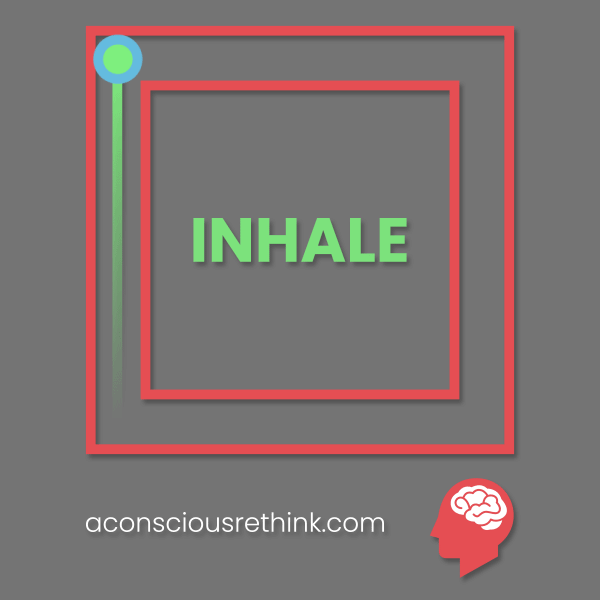Hitting oneself is an act of self-harm.
At the core of all self-harm, a person is intentionally hurting themselves for whatever reason they might have.
Understanding this behavior is the key to finding healthier ways of dealing with your emotions.
If you hit yourself, this article will cover some possible reasons why you do it, and a common method of trying to curb this form of self-harm.
That being said, self-harm is much more serious than many people think it is. It can be a precursor to suicide attempts, another form of self-harm that you typically don’t want to employ self-help with.
Though we can give you some information, we implore you to seek help from a trained mental health counselor to get to the bottom of the problem and find a way to address it.
Speak to an accredited and experienced therapist to help you stop hitting yourself or harming yourself in any other way. You may want to try speaking to one via BetterHelp.com for quality care at its most convenient.
Why do I hit myself?
Self-harm such as hitting yourself isn’t necessarily something that will fit into a neat box.
There are many reasons why people might harm or hit themselves. These include, but are not limited to:
1. To express unmanageable feelings.
A person may self-harm when they experience unmanageable feelings.
For example, they may feel overwhelmed or distressed and not know how to handle those emotions healthily.
Hitting themselves is a way to “get those feelings out.”
2. Impulse control issues.
Some people have mental illnesses or brain injuries that dramatically affect how their impulse control works.
They may hit themselves because that barrier that most people have that tells you not to harm yourself isn’t there.
The person might get so overwhelmed by whatever they’re experiencing that their brain just tells them that self-harm is the solution.
3. Past trauma.
People who have experienced past trauma may engage in self-harm to cope with the emotional turmoil that comes with trauma.
These feelings are often overwhelming and difficult to manage without some help from a trained professional.
4. Depression or anxiety.
Depression depresses the way we experience emotions and interpret the world. Anxiety may dramatically amplify emotions that fuel self-harm.
In the deepest reaches of depression exists an extremely dark place where a person can’t feel any emotions.
A person who is deep enough in that hole may self-harm just so they can feel something…anything…because the physical pain is a reminder that you’re still actually alive.
Likewise, anxiety can fuel self-harm as a means to cope with overwhelming feelings.
5. Chronic mental illness.
A variety of mental health disorders can cause a person to harm or hit themselves.
That may be PTSD, personality disorders, depression disorders, anxiety disorders, bipolar disorders, schizophrenia, and substance abuse disorders.
6. To exert control over their body or over their situation.
Sometimes, the person is just trying to exert control because they have been stripped of it.
For example, a child being sexually abused will not feel like they have any power to stop the abuse. As a result, they may hit themselves or self-harm to demonstrate some control over their own body.
Other times, a person may simply feel like their life and emotions are so out of control that self-harm provides something they are in control of.
7. Overwhelming stress.
Sometimes, a variety of stressful factors will come together so that they create the environment for self-harm.
For example, let’s say you’re a new parent. You bring your bundle of joy home, but they won’t stop crying and fussing nonstop meaning you can’t get more than a couple of hours sleep.
Not sleeping affects impulse control, mood and emotional regulation, and one’s ability to deal with difficult situations.
After just a few weeks of severe sleep deprivation, a person may self-harm or hit themselves out of sheer frustration.
8. Punishment.
Sometimes, a person has such a low opinion of themselves that they hit themselves or self-harm as a form of self-punishment.
They feel like they deserve to suffer because they aren’t good enough or are a bad person.
This behavior is tied to past abuse and trauma in many cases.
For example, a child abuse survivor may have been conditioned by their abuse and their should-be guardian’s words to have low self-worth and self-esteem.
9. The experience of pleasure once the pain passes.
Some people may experience euphoria or relief after self-harming.
They get a flood of endorphins and other feel-good chemicals that your body produces to cope with being under attack.
When the harm and pain passes, the person might actually feel good for a while.
10. As a distraction from troubling thoughts.
Sometimes, when a person experiences a traumatic event, they may develop a negative loop in their thoughts.
Their thoughts continuously keep going back to the event that happened, replaying it repeatedly as the brain struggles to cope with what they experienced.
In such a case, the person may use self-harm as a way to distract themselves from these troubling thoughts.
11. To release anxiety, anger, or tension.
Sometimes, people experience repeated events or difficulties that cause them to build up negative energy in themselves—negative emotions that sit, amplify, and don’t get released.
Eventually, that pent-up energy explodes out, and one way it might do that is through self-harm.
12. As a substitute for language.
Some people have a difficult time converting their emotions to words.
Those people may engage in self-harm as an unhealthy way to communicate that they are in pain or distressed.
Instead of talking or writing out their feelings, they hit or harm themselves to bring attention to the fact that they are in distress.
How can I stop self-harming?
Again, we encourage you to seek help from a trained, certified mental health professional. Self-harm is often a symptom of a deeper problem.
Trying to stop self-harm is a great goal, and you’re making a good choice to curb that behavior.
However, you need to address the underlying issue causing you to hit yourself or engage in self-harm if you want to stay clean from self-harm.
It is a good idea to seek professional help from one of the therapists at BetterHelp.com as professional therapy can be effective in helping you to curb self-harm and address its underlying causes.
The following process is a common way to try to manage and stop self-harm.
It is not a replacement for therapy or for the help that mental health professionals can give you.
Still, it can help to understand the kind of strategies that people use to manage this harmful behavior.
1. Make a tangible list of reasons not to self-harm.
Take the time to sit down and write out a list of reasons you don’t want to self-harm—do this on your cell phone so you always have that list on you.
Then, when you’re struggling, you can pull out the list, read your reasons, and try to remind yourself why you’re trying to stop.
If you feel like you can’t use yourself or your own well-being as a reason, that’s okay.
Look at whatever other reasons you can find. Hopefully, with more work and some therapy, you’ll be able to add yourself to that list.
2. Reduce how often you self-harm.
You may find that you just can’t stick to quitting cold turkey. Sadly, this can convince you that you aren’t able to change the negative behavior when you relapse, which just isn’t true.
A better solution is to reduce the number of times you self-harm during the week.
First, cut it down maybe 25% of the time. Then when you’re ready, you cut it down again and again until you’re not doing it nearly as often or stop altogether.
This kind of staggered approach tends to have a greater chance of success.
3. Try less intense methods of self-harm.
Certain kinds of self-harm are more damaging than others. Self-harm, such as cutting or hitting yourself, is pretty severe.
One thing you can try is to change to a less intense method of self-harm.
One suggestion is an ice cube. The intensity of the cold of the ice cube can be painful with the added benefit of not doing any real harm to yourself.
Some people may wear a rubber band around their wrist to snap when they feel the urge.
A cold shower may also provide the kind of discomfort and relief that self-harm would otherwise cause.
This isn’t a forever solution, and you don’t want to make it into one, but it can help you get through stepping down the impulses.
4. Try to remove tools and temptations.
For example, let’s say that you cut to self-harm. Take your implements, get rid of them, or put them somewhere that isn’t easy for you to access.
Hitting yourself is a bit more of a challenge because you can’t exactly hide your fists, right?
Instead, what you can do is punch pillows on a couch or try to avoid situations that would otherwise cause you to self-harm.
Or maybe it’s a friend whose toxicity triggers you into a bad mental space. It might be a good idea to create some distance from that person.
Just do what you can to reduce the temptation and your ability to harm yourself.
5. Protect something you care about.
There’s a self-harm reduction project called the “butterfly project.” Basically, the person will draw a butterfly on their skin where they would normally self-harm.
Then, instead of trying to convince themselves that they shouldn’t hurt themselves, they instead focus on not causing harm to their butterfly.
This can help trigger the empathy and compassion parts of the brain to prevent self-harm, not because the person doesn’t want to hurt themselves, but because they don’t want to hurt their butterfly.
Now, you may find that idea doesn’t suit you, and that’s okay. Instead of a butterfly, try thinking about something else you wouldn’t want to hurt.
Maybe you keep a picture of a loved family member, pet, or maybe your child with you. You hurting yourself will inevitably hurt them because they don’t want to see you suffer.
6. Employ distractions to change your mentality.
The more you focus on negative feelings and impulses, the easier it is to give in to them.
You may try replacing your self-harm actions with other actions that distract you from your emotions.
Maybe when you feel like self-harming, you can instead go for a run, read a book, partake in a hobby, or watch something funny.
Breathing exercises can also distract your mind. There is a method called “box breathing” where you methodically inhale for four seconds, hold your breath for four seconds, exhale for four seconds, hold your breath for four seconds, and repeat until your mind stills.
You want to focus on your breathing and counting out that four seconds. Here’s a box breathing visual to aid you:

It may sound silly, but give it a try a few times when you’re feeling negative emotions.
7. Talk to someone.
Self-harm can be a scary subject to people who don’t understand it. You may try to open up to your friends and family about your self-harm and get some negative reactions.
Hopefully, with a little time and help, they will be able to better support you and be there for you through these difficult things.
It might help to have some joint therapy sessions with a mental health counselor so they can learn about your self-harm and how to support you safely.
It’s never easy to be that vulnerable. Do consider who you’re going to open up to. Be wary of opening up to people who may not be healthy or that might use that information against you.
A support group or therapist may be the safest place to open up. Still, you can’t necessarily tap them when you really need them.
It will help to have someone in your personal life who can be there for you while you work through it.
Don’t give up…
Self-harm is a difficult, challenging topic. There is a lot to it that needs to be addressed so you can walk your path of healing and recovery.
The most important part of it is to not give up.
There’s a very good chance that you’ll relapse on your journey. We want you to know that’s okay. It happens. It’s part of the process of healing.
What’s important is that you don’t tear yourself to pieces over being human and not getting it perfectly right.
Instead, you count your days clean and say, “Hell yeah! I had 30 days clean! This time I’m going to go 31!” And before you know it, you’ll be clocking months and years.
You can do this. You can be better. You can get better.
Get yourself in with a mental health counselor if you find yourself lost. They should be able to help you.
Still not sure how to stop hitting or harming yourself?
Talk to a therapist about it.
Why? Because they are trained to help people in situations like yours. They can help you to explore why you hit yourself and guide you to a place where you no longer do.
BetterHelp.com is a website where you can connect with a therapist via phone, video, or instant message.
While you may try to work through this yourself, it may be a bigger issue than self-help can address.
And if it is affecting your mental well-being, relationships, or life in general, it is a significant thing that needs to be resolved.
Too many people try to muddle through and do their best to overcome issues that they never really get to grips with. If it’s at all possible in your circumstances, therapy is 100% the best way forward.
Online therapy is actually a good option for many people. It’s more convenient than in-person therapy and is more affordable in a lot of cases.
And you get access to the same level of qualified and experienced professional.
Here’s that link again if you’d like to learn more about the service BetterHelp.com provide and the process of getting started.
You may also like:
- Self-Destructive Behavior: The Causes, Traits, And Types
- Self-Punishment: What It Is, Examples, What To Do Instead
- What To Do If You Feel Like You’re A Bad Person
- Why You Are Wrong To Believe You Deserve To Feel Pain
- 11 Symptoms Of A Self-Loathing Mindset (+ How To Overcome It)
- 4 Things To Do When You Don’t Care About Yourself
- 10 Ways To Overcome “I Don’t Matter” Thoughts And Feelings










